Dick and Trayvon … Connect the Dots
This is a fitting moment to recall that 15 months ago, on the weekend of March 22, 2012, all print, radio and TV news was dominated by two seemingly disconnected stories.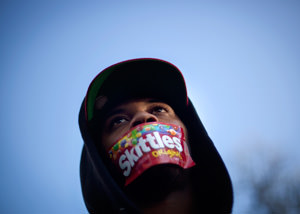
By Judy Balaban
This is a fitting moment to recall that 15 months ago, on the weekend of March 22, 2012, all print, radio and TV news was dominated by two seemingly disconnected stories. One concerned the former vice president of the United States, Dick Cheney, a 71-year-old white man who had just been given a brand new heart to replace his faulty one, recovering in a superbly equipped hospital room just outside of our nation’s capital. The other was about a 17-year-old black boy named Trayvon Martin whose healthy heart had been made to stop beating as he walked home in a gated Florida community, under a light rain, wearing a hooded sweatshirt and carrying a bag of Skittles and a bottle of iced tea. The stories were not disconnected. And the facts linking the one to the other, for some of us, constituted a textbook example of what might be labeled tragic irony.
Now, in June 2013, the trial of George Zimmerman, the man who shot and killed Martin, has begun in Florida. Cheney never knew the defendant or the boy Zimmerman admitted to killing and he will be nowhere near that trial. Still, it’s the ideal time to trace the dots connecting him to it, to the defendant’s original claim of innocence and the concept on which it was based, and to the story of a boy’s life being truncated suddenly, violently and unnecessarily.
Martin had actually been shot dead nearly a month before most of us ever heard of him. His death had been covered by the local news in Sanford, Fla., where he was staying with his divorced father and his father’s fiancee, and in the Miami Gardens area where he had been living with his mother. But it wasn’t until the weekend of March 22, when Cheney got his new heart, that the national news turned our attention to Martin’s death, to the circumstances surrounding it, to the lack of an arrest and the immediate “Stand Your Ground” claim of innocence, and to the near-immediate release of the man who had, admittedly, ended the boy’s life. Let’s recall what we were told at that time.
Martin had left the home where he was staying in order to walk to the local 7-Eleven to buy himself a drink and a snack. He was neither wearing nor carrying any sort of weapon. He was just an average 17-year-old boy, strolling home in a light rain, wearing only his hooded sweatshirt for protection. If 28-year-old George Zimmerman had not been out on the same night, driving around in his car and looking for a problem, none of us would have ever heard of him or of Trayvon Martin.
You may think I am slanting this story by stating that Zimmerman was out “looking for a problem” that night. But that is exactly what his own best judgment, not instructions from his neighbors or the police, had told him to do, and what he was admittedly doing. Zimmerman, whom we are told had gone out to run an errand, was the volunteer coordinator of a local neighborhood watch association. My stepson once started a neighborhood watch on our street and nearly two decades later, when a rash of burglaries broke out in our hillside area, another such group was formed again. So I have heard two generations of policemen address neighborhood watch meetings and relate to members individually, by phone and in person, about what is advisable and useful to do and what is neither expected nor wanted and could prove to be dangerous. At no time did I ever hear a policeman tell watch members to drive around alone in their cars at night to patrol their local streets, to follow people who looked suspicious to them for no apparent reason, and then to leave their cars in order to confront a person whom they alone had, without cause, identified as a possible suspect of an uncommitted crime. So there is no other way to accurately describe what Zimmerman was doing than to say that he was looking for a problem. And sure enough, when he spotted a black teenager walking down the street in a hoodie, he was sure he had found one. The teenager was carrying Skittles and iced tea. Zimmerman was carrying a gun.
The details originally released told us Zimmerman had called the police from his car to report that a suspicious-looking teenager wearing a hoodie was walking down the street. When asked, he told the police that the boy was black, and during the call he noted, “these assholes always get away.” Zimmerman had been told by the police not to follow the boy and not to get out of his car to confront him, but instead disregarded police instructions, followed the boy, parked his car, got out of it, come face to face with Martin (there are conflicting stories as to how that happened) and — when a scuffle of some kind took place — took out his gun and shot the boy to death. When the police came, perhaps men that Zimmerman knew since he was such a devoted, one might say zealous, neighborhood watch member, he admitted to shooting the teen and killing him. Some sort of perfunctory questioning had taken place in the hours immediately after Martin’s death. Citing a specific Florida statute, Zimmerman had instantly claimed self-defense, and — within five hours — the police had closed the case, immunized Zimmerman and sent him home, a free man. At that time, both the police and Zimmerman were relying on the strength of a Florida law, enacted in 2005 and called “Stand Your Ground.” It was the basis of Zimmerman’s original claim of innocence, as well as the police decision to release him with no further ado. That’s where Dick Cheney comes in.The concept of standing one’s ground has been around in case law for a very long time. In theory, it offers a defendant a reason to explain why he or she did not try to retreat before using force, perhaps deadly force, when being threatened with death or serious bodily harm while in a place he or she was legally entitled to be. Used as a defense in a civil or criminal trial, it might mitigate against the severity of the charges, the findings or assignment of penalties. But in the past dozen years, several states began passing Stand Your Ground laws. And these statutes can almost instantly shield potential defendants and keep them from being arrested, detained, tried or convicted of any civil or criminal offense whatsoever.
For the moment let’s set aside the fact that it was the unarmed black minor, minding his own business and doing nothing but carrying a beverage, Skittles and his cellphone, who had every right to believe he was in danger since he was being followed, tailed — for some unknown reason — by an armed, white, adult male who then parked his car and accosted him though he was obviously not a policeman. Meaning that it was the boy who might well have invoked the Stand Your Ground law in order to protect himself from an armed and possibly dangerous stalker. We don’t know what Zimmerman did or did not say to Martin, or when Martin realized that Zimmerman was armed, or how quickly Zimmerman pulled his gun on Martin. Likely Zimmerman will be asked questions about all that at the trial. There is only one person who might be able to refute or corroborate Zimmerman’s testimony. Sadly he is, as we all know, dead. And that is usually, or at least often, the case with the Stand Your Ground measures. The person victimized is no longer alive to testify against the perpetrator who may be granted total immunity, virtually on the spot, under a Stand Your Ground/self-defense claim, based upon nothing but his own say-so.
We used to be a country in which we assumed people would not immediately shoot another human being but rather exercise caution, self-control and good judgment when they suspected danger might be at hand. Perhaps we expected too much and, on occasion, people who hesitated before shooting a possible assailant lost their lives. There are many kinds of tragedies. How, though, did we get to be a nation with laws that go to the opposite extreme — decrees that give you permission to shoot and kill someone else if you even vaguely suspect that he or she may wish to harm you and then walk away, presumed innocent, without arrest, detention, a trial or any other investigation, automatically protected from experiencing any kind of consequences?
It did not happen overnight. That process began 12 years ago when, after the tragedy of 9/11, then-Vice President Dick Cheney developed and implemented a policy doctrine for dealing with potential terrorist threats called the “One Percent Doctrine.” It absolved us, as a nation, from the responsibility of having to retreat or prove anything in order to justify using force, including deadly force, if we had even a 1 percent degree of suspicion that we were under threat of attack.
Though they had not shared it with the public at that time, we learned after the 9/11 attacks that when George W. Bush, Cheney, and other members of their new team were about to take office in January 2001, outgoing members of the Clinton administration warned them extensively about the rising tide of threats from Osama bin Laden and al-Qaida. Then, during the next eight months — until September 2001 — various agency heads deluged the White House and Cabinet members with information about intercepted messages of all kinds indicating that bin Laden and al-Qaida were planning a major strike against America — not on one of its foreign outposts, but directly against one or more targets within its own continental borders. There was no specific target, date or method of attack identified, but the volume of intercepted messages was of great concern.
The new administration, though, had other fish to fry. Having been willed a substantial budget surplus, President Bush was preoccupied with getting tax cuts passed and setting off to his first month-long vacation at his new ranch in Crawford, Texas. After three or four once-a-month briefings focused on the flood of threats about a direct attack against the country, then-Attorney General John Ashcroft had ordered that briefings on bin Laden and al-Qaida be stopped so that he could focus on ending prostitution in New Orleans. And Cheney, having spent his first few months in office meeting with oil industry giants including campaign supporters from Enron and former colleagues from Halliburton, was busy overseeing the drafting of a new U.S. energy policy.In the aftermath of 9/11, most of America, including the Democratic Party and the mainstream press, extended extraordinary compassion to the president and vice president. As I watch today’s congressional sessions in which Republican political leaders and their would-be successors call President Obama a traitor, conspirator, an enemy of the country, its people and its heritage, I reflect with nostalgia about the post 9/11 period when nobody pointed fingers at the White House, at the Pentagon or at the Bush administration for negligence. Almost all of us just got behind our leaders and supported them as they began to weave a blanket of security measures around our nation. I think somewhere in our own hearts, regardless of whether we had voted for them or not, many of us imagined how awful it must have been for Bush and Cheney to have had 9/11 happen on their watch, perhaps to question, in the privacy of their own consciences, what they might have done differently and whether that might have made a real difference. What we did know was that they were busy trying to do whatever they could to shield us in the future. And, in good faith, sometimes against our own better judgment about protecting the essence of a free country, many of us supported them.
Cheney’s One Percent Doctrine, his solution for protecting America from future danger, was in fact quite radical. If, it instructed us, we were even 1 percent suspicious that someone might do us harm, we were permitted, even encouraged, to act first to destroy the potential adversary and then, if there were questions, to ask them later. “It is not about our intelligence,” the vice president declared, “it is about our response.”
Acting first, before we gathered information and corroborated it, seemed acceptable, perhaps even patriotic, at the time. We were, as many of us recall, feeling vulnerable and frightened for ourselves, our families and our country. As it turned out, globally, the policy’s inherent excess led to abuse almost immediately. Much like an armed George Zimmerman riding around to look for a problem in Sanford on the night he shot Trayvon Martin, the Bush administration looked around the Middle East for a problem, decided it had found one in Iraq where nobody had attacked us and where there was no hard evidence that anyone was planning to, and shaped its suspicions into a rationale for invading Baghdad.
How, though, do we connect the dots between Baghdad and Sanford? As usual, it’s useful to follow the money. Once we implemented Cheney’s One Percent Doctrine in foreign lands, arms manufacturers and related contractors were assured of long periods of prosperity, not only for supplying us during the wars in Afghanistan and Iraq, but anywhere and everywhere that danger might be even slightly perceived during the then-newly declared, long-term global war on terror. If the policy was acceptable in international terms, why couldn’t the same code govern personal safety on our own shores? If we as a nation could shoot first and ask questions later, why couldn’t we as individuals protect ourselves in the same way? For people within the gun culture, this sounded not only sensible, it rang of traditional, old West, self-reliant Americanism. And for people who made and sold guns and ammunition to people within our domestic gun culture, it sounded like the basis for a whopping new business bonanza.
In order to translate the vice president’s federal, anti-terrorist doctrine and institutionalize it for individuals in towns and cities within the boundaries of our own shores, laws were needed. Fortunately for them, the people who make and sell domestic weaponry are often politically involved with other people who are masters at influencing our country by getting legislation passed in city and county councils and state legislatures that accommodate their financial interests.
Since the most sacrosanct place of safety is the home, the first laws passed to institute Cheney’s doctrine as domestic state policy were known as “Your Home Is Your Castle” laws. Thus if someone approached your house or property and you suspected he or she had come to do you harm, you could shoot and even kill, claim self-defense and immunity via the Castle statutes and be pretty much in the clear. Any debate concerning retreat was somewhat moot. After all, you were already in your own home. As Castle laws passed and the word went out, exactly as anticipated, sales of guns and ammunition soared.
But why stop at home? People who want to buy guns feel threatened in places far and wide, and, of course, on public streets where anyone can walk or drive. What could laws be called that permitted you to exercise the right to invoke the Cheney doctrine wherever you happened to be? On what ground would you need to be standing in order to be sure that the law gave you permission to shoot and maybe kill first, and ask questions later? As it turned out, that didn’t really matter. A generic term did the job much more efficiently.As a free American, whatever ground you stand on, legally, is your ground. And exercising your conviction by standing on it against someone who might do you harm is your right, perhaps even your obligation. It had a good ring to it and so, before long, several states passed Stand Your Ground laws to go with their Your Home Is Your Castle ones, and once again gun sales skyrocketed.
Nobody has been able to decisively assess the effects of the Cheney doctrine’s offshoot laws. Some studies demonstrate that they have increased violent gun crime, others that crime has decreased, while still others say there has been no change among minority populations but a rise in both hospitalizations and gun deaths among white males. In some states with Castle and Stand Your Ground statutes, there is no unequivocal evidence of any effect, though in Florida — whether or not other factors are involved — since the laws were passed in 2005, gun deaths have tripled.
Cheney’s radical One Percent Doctrine did not give birth to self-defense claims or the concept that it is your right to defend yourself in your own home or anywhere you have a legal right to be. What was new about Castle and Stand Your Ground laws spawned by his doctrine was that — once these became actual statutes — by citing them, you could avoid an arrest or a trial and, like Zimmerman, go home a free man after shooting and killing a 17-year-old boy, who was minding his own business while walking home from a convenience store, after you pursued him solely because you had some notion in your own head that people like him were up to no good and you had to do something about it … and about him.
Once the public took notice of the Martin/Zimmerman case, things changed. The police chief was fired and replaced. A special prosecutor was appointed. The defendant was arrested, bailed out, charged, then detained again and bailed out again. There were depositions taken, evidentiary hearings held, lawyers appointed, and an avalanche of media coverage led up to the June start of the trial. Shortly before the trial began, Zimmerman had a last chance to ask the judge to dismiss the case and grant him the immunity that Florida’s Stand Your Ground law and the Sanford Police Department had originally seemed to promise him. By then, though, there were way too many questions about whose ground had been violated on the night when Martin died for Zimmerman’s lawyers to risk requesting that. And so, Zimmerman is standing trial on a charge of second-degree murder and basing his claim of innocence on the old fashioned, pre-Cheney doctrine version of self-defense.
We do not know how many people have been killed by others who were as immediately immunized by either Castle or Stand Your Ground laws as George Zimmerman had originally been. Trayvon Martin was killed on the night of Feb. 26, 2012. If his family, their supporters and then our national media had not latched on to this story, creating the attention that forced Florida to arrest Zimmerman and appoint a special prosecutor a month later, we might never have heard Martin’s name, and Zimmerman might still be just an unknown neighborhood watch coordinator riding around Sanford looking for another problem. But, as it turned out, when the uproar about Martin’s death arose on the weekend of March 22 last year and we learned, simultaneously, about Cheney’s new heart and his new lease on life, we were able to recognize the irony of those two seemingly random news stories sharing headlines on the same days and to connect the dots between them. Tracing that trajectory does more than just link Dick Cheney and Trayvon Martin; it provides us with a linear illustration of how we got to be the kind of country we’ve become in the last dozen years.
Your support matters…Independent journalism is under threat and overshadowed by heavily funded mainstream media.
You can help level the playing field. Become a member.
Your tax-deductible contribution keeps us digging beneath the headlines to give you thought-provoking, investigative reporting and analysis that unearths what's really happening- without compromise.
Give today to support our courageous, independent journalists.
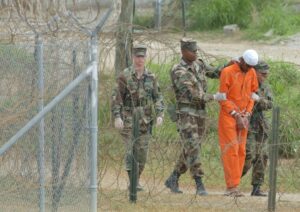

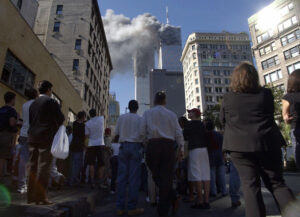
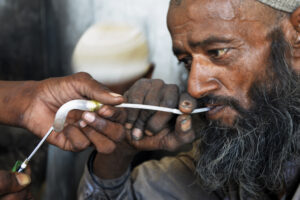
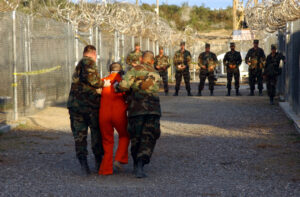
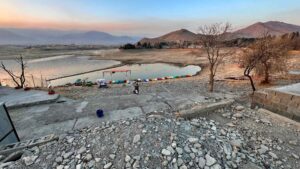
You need to be a supporter to comment.
There are currently no responses to this article.
Be the first to respond.